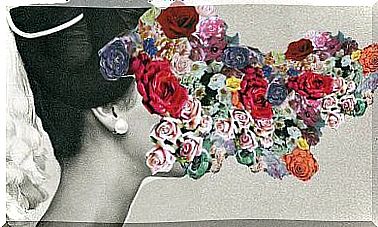Cultural Appropriation, What Is It?

Art is a mix of influences that contains many imitative elements. The problem of cultural appropriation lies in the distinction between this way of creating and the concept of copying, theft and plagiarism.
At this point, copyright in collective identities is being diluted, giving way to traditions that really originated in power relations in which the strongest profit from the weakest. This concept is what many call “wrongful appropriation.”
There has therefore been a significant number of protests on this subject. For example, the presence of tattoos with Polynesian tribal motifs was very popular and sparked some controversy. The use of gypsy symbols by singer Rosalía was also widely criticized in Spain not so long ago.

What exactly is cultural appropriation?
As we mentioned above, cultural appropriation is the adoption of instruments, images and symbols belonging to a culture that is different from one’s own culture.
Around this definition there is the question of whether someone is really talking about wrongful appropriation or if in most cases it is just a tribute to other cultures.
If you analyze the concept of cultural appropriation further, you will see that the idea also includes the presence of power dynamics. That is, people blame the dominant culture for using the elements of the cultures they have systematically suppressed.
The concept of cultural appropriation is a subject of much debate, although it is not so new. Globalization and technological advancements allow us to access a lot of information with just one click.
So while it’s not a new concept, the global dimension certainly is. But what exactly distinguishes cultural appropriation from a tribute rooted in admiration for a culture?
The two main points for answering this question are consent and benefit-sharing. This is because there is a clear economic interest in some forms of imitation, especially in the musical field.
In this sense, you can use cultural appropriation to indicate the exploitation of certain symbols by cultural industries. This exploitation often occurs without recognizing the original culture in a symbolic or economic way.
Cultural appropriation versus assimilation
This is a complicated issue with origins in the confluence of everyone’s story. So you have to understand how international power dynamics work to analyze it in depth.
First of all, you need to refer to other points of view on the subject. For example, some argue that non-Western people who wear jeans or Indigenous people who speak English somehow appropriate dominant cultures.
The argument against this, however, is that marginalized groups do not have enough power to decide whether or not to stick to their traditional customs. Thus, assimilation occurs when people belonging to marginalized groups adopt the elements of the dominant cultures in order to survive.
Examples of cultural appropriation
The music world offers some clear examples of cultural appropriation. The popularization of African American music by Elvis Presley, for example. And twerking, which was recently associated with lower-class non-white groups. These are just a few examples.
There are also examples of this in Buddhism. This is a religion usually associated with peace, because of the stereotypes surrounding meditation.
So cultural appropriation is a way of commercializing and introducing things that were once beyond the margins of the market.

Is this a real problem?
Cultural appropriation is a problematic concept that some people deny. This has several reasons:
- Many people argue that cultural appropriation exists, but it is not a problem.
- Their arguments center on the idea that cultures are constantly changing and know no boundaries. They state that they are constantly flowing and changing and moving from one trend to another.
- For there to be cultural appropriation, there must be cultural elements that belong only to a few.
- Infringement occurs when a person cannot enjoy something that he was used to because of someone else’s actions. However, cultural appropriation happens when something previously used by a small group of people becomes fashionable.
- Non-racist racism? You have to keep in mind that no cultural element is 100% pure or misplaced.
Activists often become possessive of cultures, a purity that is not characteristic of the social environment in which each person develops.









